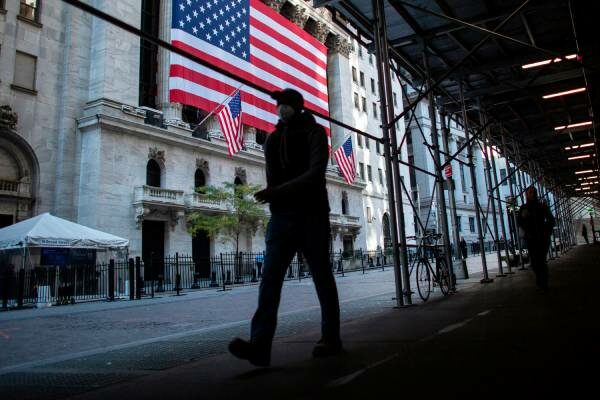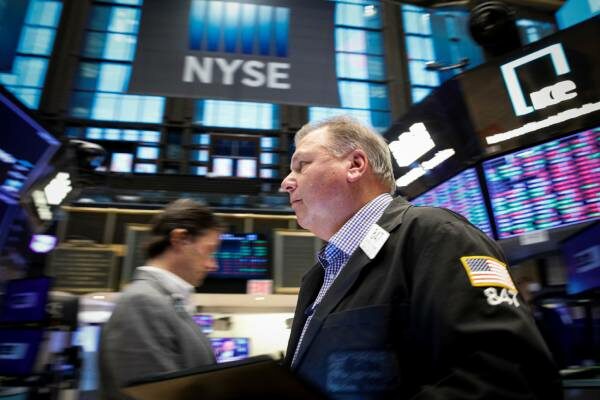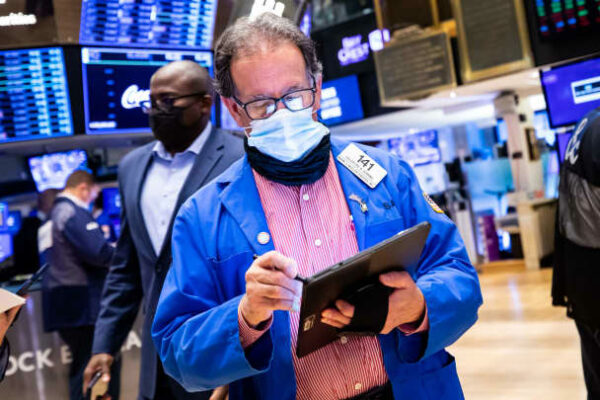- The possibility of higher loan fees have frightened stock financial backers.
- The S&P 500 stock list is down over 9% in January starting at 2 p.m. ET Thursday.
- A more slow U.S. economy (and lower corporate profit) just as the possibility of safer resources like securities turning out to be more alluring may result from higher loan fees, as per monetary specialists.
The speculation local area and monetary media will quite often fixate on loan fees and understandably. Loan fees allude to the expense somebody pays for the utilization of another person’s cash.
Loan fees are going up
Super-simple pandemic financial approach gave solid help to resource costs. The costs of securities in the optional business sectors expanded as new securities could be given at lower rates (and hence lower current yields – see model on what loan fees mean for securities).
Generally low security yields and monstrous monetary improvement drove financial backers into more hazardous resources including stocks, which was a significant benefactor of the outperformance of the S&P 500 out of 2020 and 2021.
The Federal Reserve, the U.S. national bank, is relied upon to build its benchmark rate a few times this year to tame adamantly high expansion. Taken care of seat Jerome Powell attested that probability on Wednesday.
At the point when the Federal Open Market Committee (FOMC), which comprises of seven legislative leaders of the Federal Reserve Board and five Federal Reserve Bank presidents, sets the objective for the government subsidizes rate-the rate at which banks get from and loan to one another short-term it has a far reaching influence across the whole U.S. economy, including the U.S. securities exchange. What’s more, while it for the most part requires no less than a year for an adjustment of the loan fee to have a far and wide monetary effect, the securities exchange’s reaction to a change is frequently more prompt.
At the point when there’s an option in contrast to values for yield once more, financial backers recalculate the value hazard premium. High-flying value valuations are getting a hair style. For securities, assumptions for expanding financing costs mean financial backers in the essential market acquire higher coupons on new issues. This places tension on costs of extraordinary securities in the auxiliary market which are saving money. This is one justification for why security yields are rising. This article has more on financing costs and the monetary standpoint.
The conjecture has made stocks plunge in January.
The S&P 500 list is down around 9% for the year. At a certain point this week, the bin of U.S. stocks plunged beneath 10% – whenever that is first occurred since the underlying pandemic disturbance of March 2020. The file shut down 0.2% Wednesday after Powell’s comments, eradicating prior gains.
Other than the government finances rate, the Federal Reserve likewise sets a rebate rate. The markdown rate is the financing cost the Fed charges banks that get from it straightforwardly. This rate will in general be higher than the objective government supports rate (to a limited extent, to urge banks to get from different banks at the lower administrative assets rate).
How do stocks perform when loan costs rise?
All things considered, when rates increment it’s really great for stocks generally. Once more, the ramifications are that rates are going up to sluggish (not stop) the pace of monetary development. A solid economy can be excellent for organizations.
An investigation from J.P. Morgan showed that from February 2009 on, the S&P 500 and 10-year depository moved together until the 10Y ascents until 3.5% when the two veered. In another words, increasing rates can be really great for the general securities exchange, to a point. On January 21st, the 10-year depository was 1.75%.
Cooler economy
For what reason does the financial exchange mind?
Comprehensively, the reasons appear to be twofold: A stoppage of the U.S. economy and the possibility of different ventures like bonds turning out to be more appealing comparative with stocks.
At the point when the Fed raises its benchmark loan fee, banks and moneylenders will more often than not raise acquiring costs, as well. Contracts, Mastercards and other obligation become pricier, lessening shopper spending and request. Organizations likewise pay more to fund their tasks.
The Federal Fund Rate
The loan fee that impacts the securities exchange is the government subsidizes rate. The government subsidizes rate is the financing cost that store organizations banks, investment funds and advances, and credit associations charge each other for short-term advances (while the markdown rate is the financing cost that Federal Reserve Banks charge when they make collateralized advances typically for the time being to storehouse establishments).
Excessively far, excessively quick?
The Fed’s “plan” is to chill expansion. Purchaser costs bounced 7% in December from a year sooner, the quickest pace starting around 1982.
In any case, the securities exchange isn’t responding just to a probable rate knock; stock gyrations have as a lot to do with vulnerability over how quick the Fed will speed up.
“What the market doesn’t like, is fast changes in the money related scene,” as indicated by David Stubbs, the worldwide head of cross-resource topical technique at J.P. Morgan Private Bank.
The Federal Reserve impacts the government finances rate to control expansion. By expanding the government finances rate, the Federal Reserve is viably endeavoring to shrivel the stockpile of cash accessible for making buys. This, thusly, brings in cash more costly to get. Alternately, when the Federal Reserve diminishes the government subsidizes rate, it expands the cash supply. This supports spending by making it less expensive to acquire. The national banks of different nations follow comparable examples.
It’s essential to take note of that in any monetary and market climate, there are various complex accounts at play. Presently is the same. Further, the expansive based business sectors now and again smooth out basic unpredictability in specific areas (henceforth broadening), while different patterns, similar to the run up in post-Covid valuations, are more unavoidable. The following several patterns in the securities exchange to look as loan fees rise.
At the point when expansion started speeding up in mid 2021, Fed authorities flagged it was probable transitory, the transient consequence of a hyperactive economy rising up out of its pandemic hibernation.
Presently, their tone has moved as expansion has waited well over the Fed’s 2% since a long time ago run target. In huge part, that appears to be because of buyer interest for actual products exceeding inventory, as Covid keeps on disturbing makers.
“Since the December meeting, I would say that the expansion circumstance is about something similar however likely somewhat more regrettable,” Powell said Wednesday. “I think to the degree the circumstance crumbles further, our approach should address that,” he added.
What Happens When Interest Rates Rise?
At the point when the Federal Reserve acts to expand the rebate rate, it quickly lifts momentary getting costs for monetary foundations. This has an expanding influence on basically any remaining getting costs for organizations and buyers in an economy.
Since it costs monetary organizations more to get cash, these equivalent monetary establishments regularly increment the rates they charge their clients to get cash. So people purchasers are affected through increments to their Visa and home loan financing costs, particularly assuming these advances convey a variable loan fee. At the point when the loan cost for charge cards and home loans expands, how much cash that buyers can spend diminishes.
Stocks lose radiance
In the event that rates rise, financial backers might see more worth in securities, endorsements of store and different resources remembered to be safer than stocks.
Yields in those moderate resources have been generally insignificant since the 2008 monetary emergency, which prompted a drawn out time of absolute bottom financing costs to prod the economy.
What Happens When Interest Rates Fall?
At the point when the economy is easing back, the Federal Reserve slices the government finances rate to animate monetary movement. A reduction in loan costs by the Federal Reserve has the contrary impact of a rate climb. Financial backers and market analysts the same view lower loan costs as impetuses for development an advantage to individual and corporate getting. This, thus, prompts more prominent benefits and a vigorous economy.
Customers will spend more, with the lower loan fees causing them to feel that, maybe, they can at long last stand to purchase that new house or send their children to a non-public school. Organizations will partake in the capacity to fund activities, acquisitions, and developments at a less expensive rate, subsequently expanding their future profit potential. This, thusly, prompts higher stock costs.
Specific victors of lower government subsidizes rates are profit paying areas, for example, utilities and land venture trusts (REITs). Also, enormous organizations with stable incomes and solid monetary records benefit from less expensive obligation financing.
Disclaimer: The views, suggestions, and opinions expressed here are the sole responsibility of the experts. No journalist was involved in the writing and production of this article.





